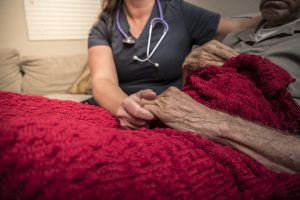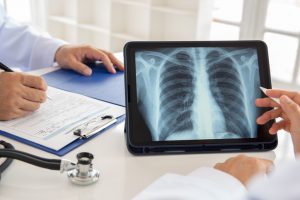Understanding how cholesterol helps or harms our health can be confusing due to several myths that exist. It is important that we debunk misinformation so that we can learn how to properly take care of our bodies.
One of the most common myths about cholesterol is that it is all bad. This is not true.
High-density lipoprotein (HDL), “good cholesterol,” transports cholesterol to the liver where it is flushed from the body. Cholesterol is also important for the production of steroid hormones, vitamin D, and bile acid. Cholesterol poses a problem for our health when high quantities of low-density lipoprotein (LDL), “bad cholesterol,” are found in our blood. This can lead to cardiovascular disease or stroke.
Here are a few other myths to explore:
- People who have a healthy weight can’t have a high level of cholesterol – not true
- Cholesterol levels have nothing to do with bodyweight. People of any weight can have high cholesterol levels
- Eating food that has a lot of cholesterol in it will not raise my cholesterol levels – not true
- Foods that are high in cholesterol tend to have a lot of saturated fat, which can cause cholesterol numbers to increase.
- Only men have to worry about high cholesterol levels – not true
- Both sexes are vulnerable to have high cholesterol levels. Women as they age lose estrogen and this can raise their risk level.
- Taking cholesterol medications makes it okay to eat anything I want – not true
- Medications used to lower the level of bad cholesterol in the body can only do so much. Diet and exercise are also very important to control cholesterol levels.
- Only people over 40 years of age are affected by high cholesterol – not true.
- High cholesterol can affect people of any age. The American Heart Association recommends having cholesterol levels checked once between the ages of 9 – 11 and again between 17 – 21. After that, young adults should be checked every four to six years.
- Having high cholesterol is based only on your diet – not true
- Several factors can contribute to high cholesterol levels. These include family history, level of physical activity, and also age are factors to consider.
Speak with your physician about your risk factors for developing high cholesterol and ask about having a blood test performed. If you would like to schedule an appointment with a physician at Flushing Hospital Medical Center, please call 718-670-5486.
All content of this newsletter is intended for general information purposes only and is not intended or implied to be a substitute for professional medical advice, diagnosis or treatment. Please consult a medical professional before adopting any of the suggestions on this page. You must never disregard professional medical advice or delay seeking medical treatment based upon any content of this newsletter. PROMPTLY CONSULT YOUR PHYSICIAN OR CALL 911 IF YOU BELIEVE YOU HAVE A MEDICAL EMERGENCY.










